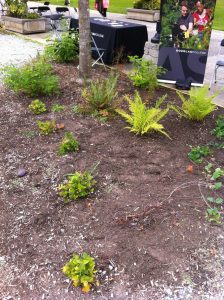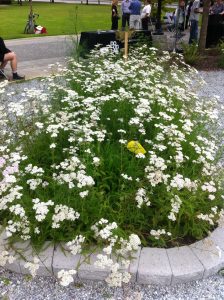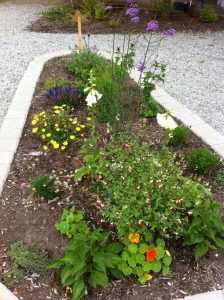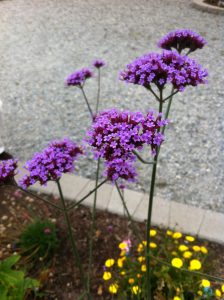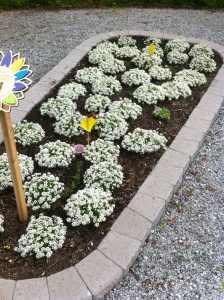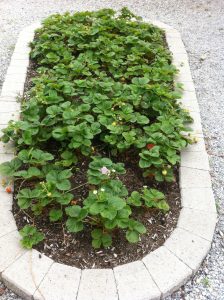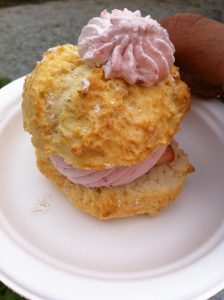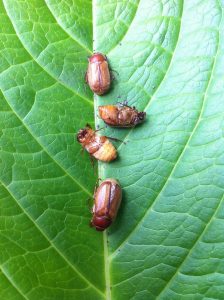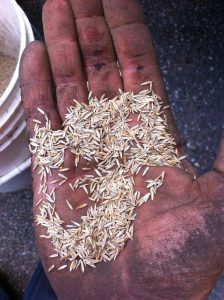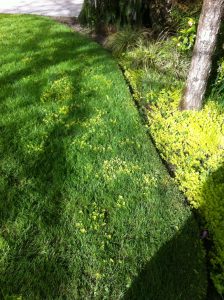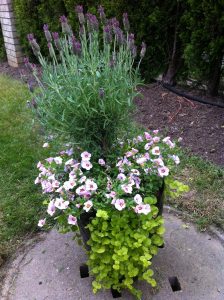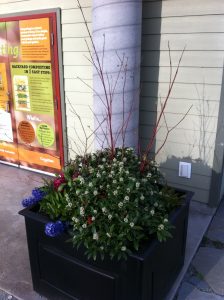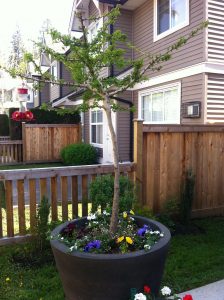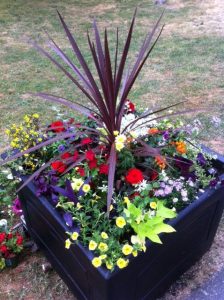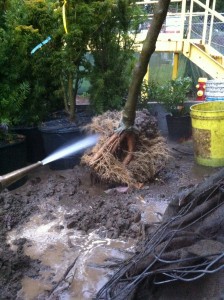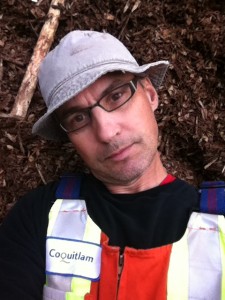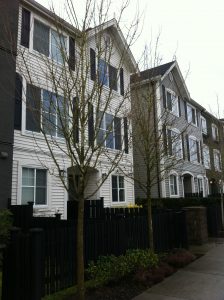The SOL (Sustainable Outreach Learning) garden at Douglas College in Coquitlam is now officially open. The creation of new gardens is always good news! I attended the June 20, 2016 official opening of the garden. Free refreshments also helped after a long day at work.
Built one year ago, the garden was officially opened after speeches and grass ribbon cutting. It features research beds and native planting at the entrance and on the edges. How many native plants can you name? I spotted Gaultheria shallon, Rubus spectabilis and Polystichum munitum.
The key point is emphasis on beneficial insects. I love plants and openly confess to outrageous ignorance when it comes to insects. I know bees are fuzzy with friendly faces; wasps are smooth with mean faces. I have lots to learn. But I know how important pollinators are. They are responsible for pollinating something like 80% of the food we consume. We must therefore care for them by providing food sources and eliminating harmful chemicals.
One interesting research plot is full of nursery cultivars which lack pollen and nectar. The insects are tricked but not for long. They know what the good stuff tastes like and fly off to search for it.
Feel free to visit and pick any ripe strawberries. Once local black bears catch on……
The garden is located on the south side of the Douglas College campus in Coquitlam. Feel free to visit. Check for ripe strawberries and study the plants. The college has a gardening club you can join, you can volunteer and, if your pockets are deep, you can donate cash. Cash is required for tables and a storage shed.
I saved the best for last: there are plans for seminars and educational programs which is very exciting. For now, you can pick up handouts on insect and plant identification.




